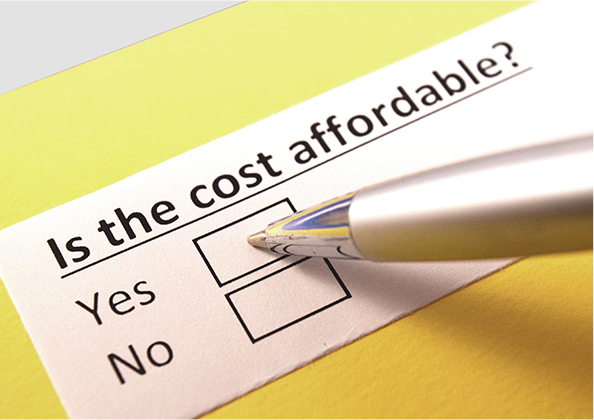- PRODUCTS
- Security Platform
- BioStar X | On-Prem SecurityNEW
- BioStar Air | Cloud Security
- BioStar 2
- Access Control
- Access Control Unit
- Biometric Readers
- RFID Readers
- Mobile Credential
- Peripherals
- Wireless Door Locks
- SOLUTIONS
- SUPPORT
- ABOUT
- device_hubHUB
In 2021, most companies are starting to consider Mobile Access Control solutions to make their offices more secure, more flexible, and to keep up with technology trends. Mobile access is especially good for companies exploring hybrid work solutions, which may need to grant access to certain people only on certain days. But with so many options, what are the most critical elements to look for in a Mobile Access Control solution?
Our security experts and engineers have come up with a list of six must-haves in any mobile access solution, whether you are considering Suprema’s Mobile Access or another system.
01
Top Grade Security, No Exceptions

It may seem obvious, but you should not sacrifice security to get the other benefits that come with Mobile Access Control or access control as a service. In theory, mobile credentials should always be more secure than most other types of credentials. One big advantage is that people keep a closer eye on their $1000 smartphones than they do RFID badges.
How do you assess how secure a Mobile Access Control solution actually is? Make sure to take a look at our full article covering all the ways that Mobile Access Control is more secure, but here are some essential things to look for.

256-bit encryption on a BLE
or NFC connection
This level of encryption is still impossible to brute-force hack using today’s computers. Look specifically for an ISO 27001 certified system architecture.

Remote deactivation
Make sure your mobile credentials can be revoked at any time, from anywhere, using a cloud interface.

Multi-authentication
Some areas of your facility may require added layers of security. Look for a solution that allows you to pair mobile credentials with fingerprint readers, passcodes, and facial authentication.
02
A Workplace Experience Employees with Love
While better security is a big plus, the big attraction with Mobile Access Control is the ability to integrate it into other areas of your workplace experience. This can include putting the mobile credentials right into the workplace app that your employees already use.
Imagine allowing employees to book meeting rooms using their workplace apps and then open meeting room doors with their phones. This level of convenience can also extend to visitor management, allowing guests to register before they arrive, and automatically notify their hosts when they arrive.
Make sure that the mobile access solution you are considering, like Suprema, has its own app, an SDK for integrating mobile access features into your existing app, and support for features like meeting room management and visitor management, or integration with your workplace experience suite.

03
Easy, Cloud-based Management that HR and IT will Love

Managing thousands – or even dozens – of RFID cards is time consuming and expensive. Physical cards get lost or stolen and have to be deactivated and replaced. Mobile access control systems move issuing and revoking credentials to the cloud. They can be set to expire within a certain time, and there is no need to return physical cards to HR (for employees) or a receptionist (for guests).
Look for a Mobile Access Control solution with a robust cloud interface that is secure. Make sure it can integrate with your existing access control software if you’re upgrading an existing system. Ensure that it allows for complete remote management, including opening doors from half-way around the world.
04
Works Reliably with Your Employee’s Phones
Phones from different manufacturers use a wide variety of chips to support the BLE and NFC connections that allow them to communicate with Mobile Access Control readers. As you would expect, Apple’s phones are highly standardized, Android phones are not.
Make sure that the mobile access solution provider has thoroughly tested their hardware and software with devices from all the common manufacturers in your region. Even if all of your employees use the same company-provided phone, guests, vendors, and delivery people may not.
One area where phones differ substantially is in BLE signal strength. An especially strong signal could trigger a reader from several meters away. A weak signal might not communicate with the reader at all. At Suprema we’ve put enormous resources into creating accurate proximity detection algorithms that are reliable across manufacturers.

05
Compatibility with Your Existing Access Control Infrastructure

If you are upgrading a legacy access control system, make sure that your new Mobile Access Control system is fully compatible with it. As mentioned above, this should include the ability for the cloud portal to interface with your on-premise security platform, such as Suprema’s BioStar 2, and the ability to communicate with existing controller boards.
If you have a Suprema access control system, your existing card, fingerprint, or face reader is probably already compatible with our Mobile Access Control solution. If it is not compatible, we offer the Airfob Patch, which allows you to affordably upgrade older readers in minutes. Airfob Patch may also be a good solution if you want Mobile Access Control but are in a rented space and cannot upgrade the built-in access control hardware.
06
Ability to Affordably Scale with your Needs
Finally, look for a solution provider with a proven track record and staying power in the industry. The average lifespan of an access control system is more than ten years. You’ll want a company that can support you through the system’s entire lifecycle and beyond.
Further, check to make sure that pricing options make sense for your company. Some manufacturers charge you for every mobile credential, as if it is a physical RFID card, even if it will only be used for a few hours. At Suprema, we offer multiple license policies. Regular licenses are intended for long-term credentials, and based on the number of users,. Dynamic licenses are for shorter term credentials such as membership passes.

Selecting an access control system requires careful consideration of your specific needs and the solutions available. You can learn more about Suprema Mobile Access solutions or get in touch with our sales team for a free consultation.











